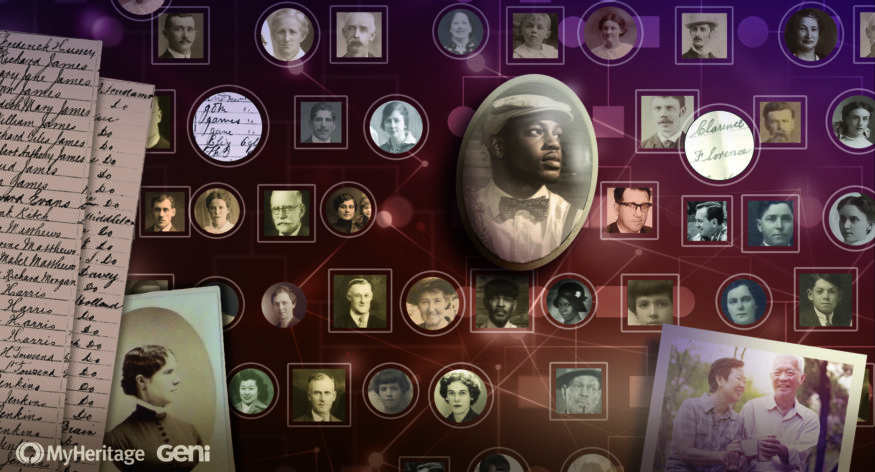MyHeritage Science Team’s Research Featured in the Prestigious Journal Science
- By Aaron


We are proud to share that our science team, led by MyHeritage’s Chief Science Officer, Dr. Yaniv Erlich, has had a groundbreaking paper published today in Science, one of the most influential academic journals in the world.
The research was conducted with scientists at Columbia University, the New York Genome Center, MIT and Harvard, and provides fresh insights into the last couple of centuries of marriage and migration in Europe and North America, and the role of genes in longevity. Other than Dr. Erlich who led the research, MyHeritage Science Team member Tal Shor is also one of the authors.
Massive Family Tree Yields New Insights about Humanity
The researchers downloaded 86 million public family tree profiles from MyHeritage’s daughter company, Geni.com, one of the world’s largest collaborative genealogy websites, out of which 43 million had detailed genealogical data, such as dates and places of birth and death. Dr. Erlich, MyHeritage’s Chief Science Officer, and his team anonymized, cleaned and validated the data; they reconciled conflicting information and fixed inaccuracies such as individuals connected to more than two biological parents, or individuals recorded as being both the parent and the child of the same individual. They validated their algorithms by comparing samples of the decisions the algorithms made against the decisions expert genealogists made in the same scenarios, and found that the outcomes matched in more than 90% of cases. Ultimately, they ended up with 5.3 million cleaned and validated independent family trees. The largest of these trees includes 13 million individuals, spanning an average of 11 generations.
After collecting, organizing, cleaning, and validating the data, the team leveraged the unique resource to investigate scientific research questions about the roles of genes in longevity and how families spread out geographically. They also created a tool that will facilitate future research by their team and others to leverage population-scale datasets of this type to answer a wide range of research questions in the future.
The dataset details when and where each individual was born and died, and mirrors the demographics of Geni.com individuals, with 85 percent of the profiles originating from Europe and North America. The researchers verified that the dataset was representative of various demographic and socio-economic parameters. For example, they cross-checked a subset of the Vermont Geni.com profiles against the state’s detailed death registry and found very good consistency between the education level of the Vermont profiles in Geni.com and the rest of the Vermont population. This observation suggests that the data reflects the general US population.
Interesting findings
The team found that industrialization profoundly altered family life. Before 1750, most Americans found a spouse within six miles of their birthplace, but for those born in 1950, that distance had stretched to about 60 miles. Before 1850, marrying in the family was common — on average, fourth cousins married each other, compared to seventh cousins today. Curiously, they found that between 1800 and 1850, people traveled farther than ever to find a mate — nearly 12 miles on average — but were more likely to marry a fourth cousin or closer. Their hypothesis is that changing social norms, rather than rising mobility, may have led people to shun close kin as marriage partners. In a related observation, they found that women in Europe and North America have migrated more than men over the last 300 years, but when men did migrate, they traveled significantly farther on average.
They also concluded that good longevity genes can only extend someone’s life by an average of five years. Significantly, they also showed that the genes that influence longevity act independently rather than interacting with each other, and that genetics plays a pretty small role in longevity overall; environmental and lifestyle factors have a bigger impact on how long people live.
Media coverage:
The new research and the discoveries from it have sent shock waves through the academic world and the general media. It has been featured in major publications, where you can read more about the research:
- The Atlantic
- Wall Street Journal
- National Geographic
- Wired
- New York Times
- Daily Mail
- The Verge
- Gizmodo
- New Scientist
- Nature
- BBC (from 0:07 – 0:12)
Summary
This fruitful collaboration between academia and consumer genealogy that resulted in this paper published by Science today, is an exciting and promising new direction for scientific research. The ultimate outcomes of such collaborations could serve as unprecedented tools for addressing fundamental questions in biomedical research better than ever before.
We’re proud of our Science Team’s achievement. They’ve worked tremendously hard to make a significant contribution to the academic world.
Studies like these have the potential to make substantial contributions to research in the fields of genetics, anthropology, public health, economics, and others. Our Science Team is undertaking more original research work. Stay tuned to learn what they will discover next!










tim daniels
November 13, 2018
great